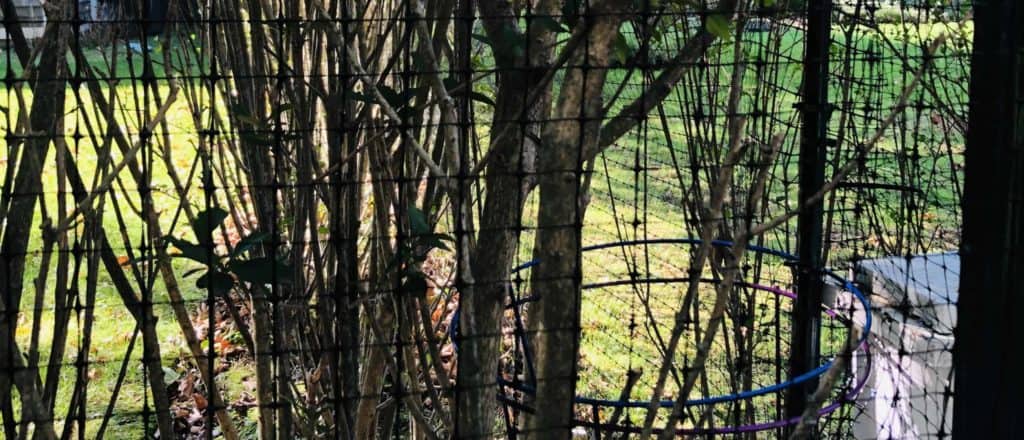Deer are something that many of us see everyday. Unfortunately they can be quite destructive, creating massive setbacks to vegetable gardens, privacy bushes, flowers, and more. Many people use deer fences to protect their plants and gardens. Deer fencing is a humane and effective way to keep deer out your garden or off your property.
Here are the best deer fence picks of 2021 based on my testing and experience with the local whitetail deer population.
Deer Fence Basic Information
These fences are designed act as a deer barrier, by keeping them out of a certain area as opposed to scaring them away. Deer fencing is normally made of tough plastic netting. The weigh of the netting can vary from being very light weight to a heavy duty thickness. Light fencing can be put over a bush with almost no support while heavy-duty fencing is usually staked into the ground with posts.
Deer Fence Height
It’s commonly accepted that whitetail or mule deer can jump about 8 feet high (2.4 meters). At this height the distance of the jump is limited, so many professionally installed deer fences will have a diagonal section at the top that slopes outward from the property at a 45-degree angle. This isn’t mandatory but it can act a strong deterrent.
Most home owners don’t go the full 8 feet, as this is prohibitively expensive, hard to install, and can takeaway from your home’s curb appeal. This fence height is usually used only by working farms, where there is significant garden value to protect, or by very serious of home gardeners. For homes, a 6-foot deer fence is more common though you will often see a 4-foot fence that is next to a line of trees, shrubs, or bushes, the combination of which is enough to keep deer out.
Deer Barrier Line Of Sight
It’s commonly accepted that deer will only hop a fence if they know what’s on the other side. So a deer might hop a 6-foot mesh fence if it can look through and see your beautiful garden, but it’s unlikely that a deer will attempt to clear a 6-foot wooden fence, not knowing what it might land on if it jumps over. Since many deer fences are used in combination with smaller, solid fences or with hedges, this can save you from going overboard on your deer fencing.
Similarly, it is understood that deer don’t jumping into a contained area so the use of double barriers — a fence separated by about two feet and then another fence — will prevent a deer from making a jump even if they do have line of sight with your garden.
Deer Fence Posts
Home deer fence posts typically are about 8 feet apart. You can go up to 10 feet apart but that would generally happen with a more structured fencing material, like a wire mesh fence. Lighter plastic fencing materials will sag a lot if the distance is too far, giving the fence a messy appearance. You don’t want to pull the fencing too tight as any additional strain on it could cause tears.
Tearing happens because deer fencing is a uniform mesh and does not has reinforced areas where the posts are placed.
For additional support you can connect the posts at the top using a light wire. I have found that 16 gauge galvanized steel wire rope is light enough to do the job but still sturdy and weather resistant.
How Close To The Ground?
One big question with deer fencing is, how close to the ground should you go?
One school of thought stays that the fencing should run along the ground and should be anchored to the ground. I’ve experimented with this using DeerBusters Kinked Ground Stakes, which are long metal stakes that you push into the ground. This makes the fence look great and it will deter small animals from entering or leaving the area (useful if you have dogs). The stakes are expensive (about 85 cents each), but they last forever and can be reused… if you can find them in the ground.
From what I’ve read and observed, deer don’t crawl into areas! Deer walk or they will hop over fences, but they don’t crawl. For this reason I recommend not buying stakes and keeping your deer fence about 4-6 inches off the ground.
The advantage of an elevated fence is that it will allow leaves to blow through in the fall and the chance of you hitting the fencing with a lawn mower or weed whacker is greatly reduced.
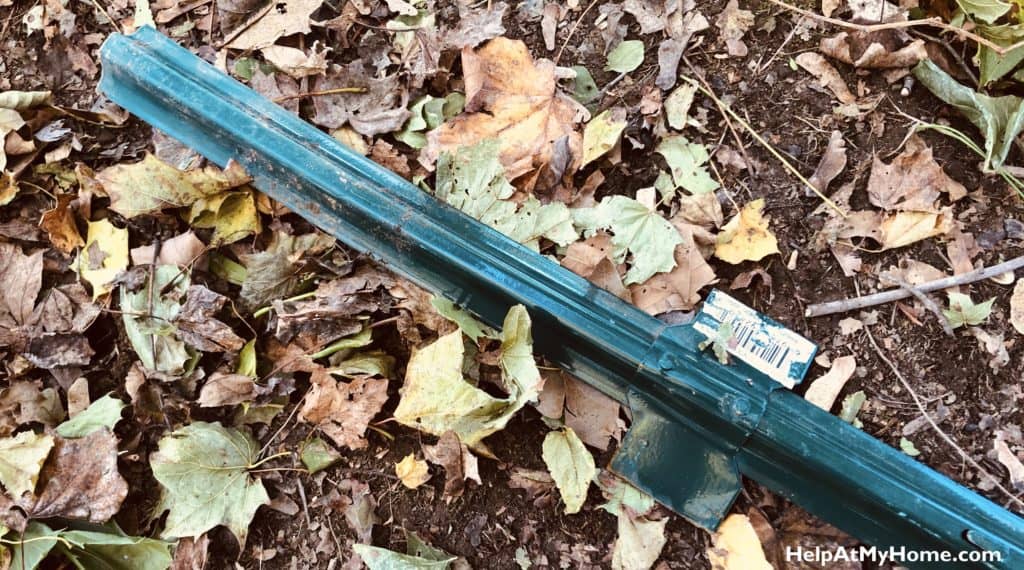
Deer Fence Posts
Deer fences can use any kind of posts, but you’d typically use a T-post or, more commonly, a U-post. Each of these are metal posts that are relatively affordable, especially compared to using wood posts or metal poles.
T-posts are popular with farms and commercial usages, but they are more expensive than U-posts, not as easy to find through normal means, and require special tools. On the plus side they are strong and very re-usable. You’d normally find these at an Agway, Tractor Supply, or similar places, but not necessarily at a mainstream hardware store.
U-posts aren’t as heavy duty as T-posts and they are more flexible, but they are more affordable and less heavy. U-posts are easier to find and they will be available at almost any hardware store or big box home improvement store.
Our recommendation is to buy U-posts for a home deer fence. They are cheap and don’t require special tools for hanging wire or mesh deer fencing.
Typically this is something you should buy in person, but if you are OK with slow shipping and you are willing to shop around, you can sometimes find very good deals on Amazon and others.
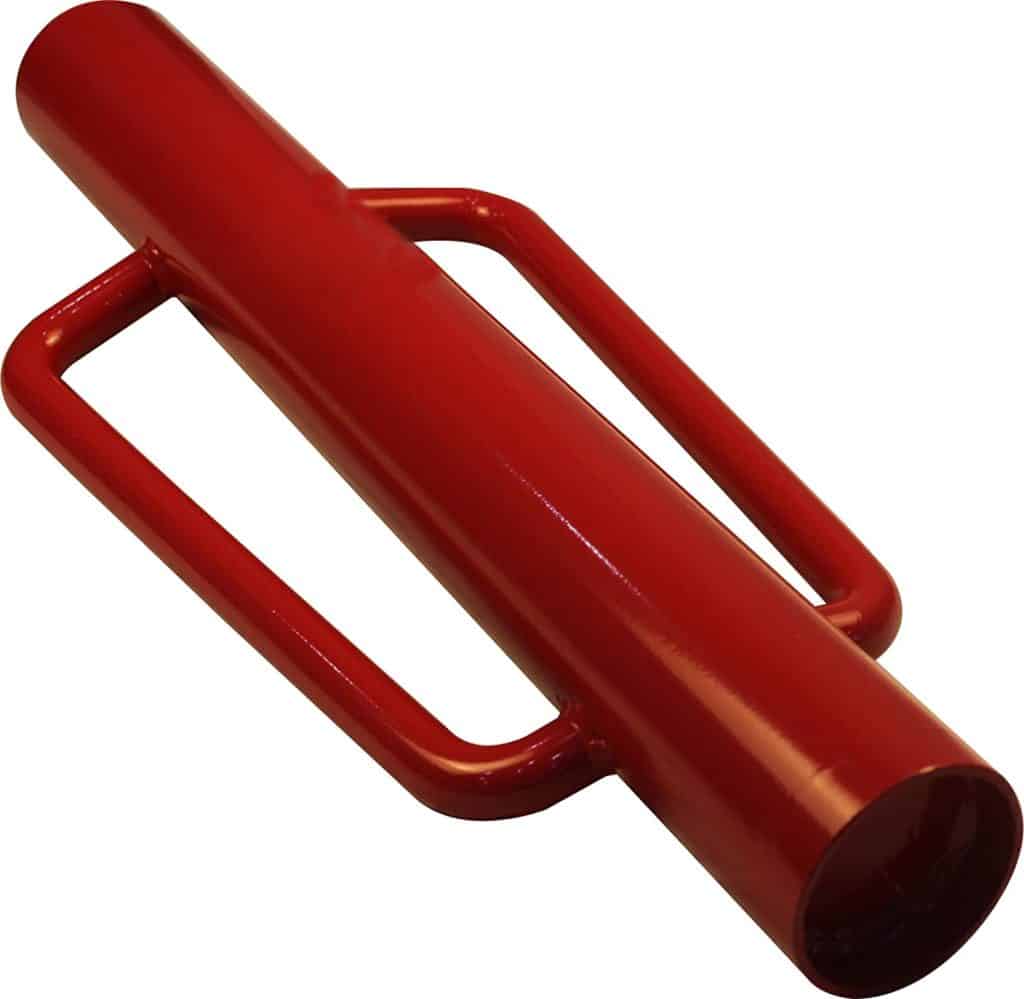
Makes sure you buy some zip ties (at least 6 inches long) for attaching the deer fence to the posts and that you buy a post driver. You, like everyone else, will think you don’t need a post driver and that you can just bang the U-posts in with a light sledgehammer. Trust me, we have all been there! If you live in a place without rocky soil a 3-pound sledge is fine (though expect to dent the top of your U-posts) but if you have rocks then you need a post driver. You’ll save at least 5 minutes per posts with this, so do the math.
Don’t forget: The posts should go about 18-inches done into the ground, so if you want a 6-foot fence, you need to buy the 8-foot posts!
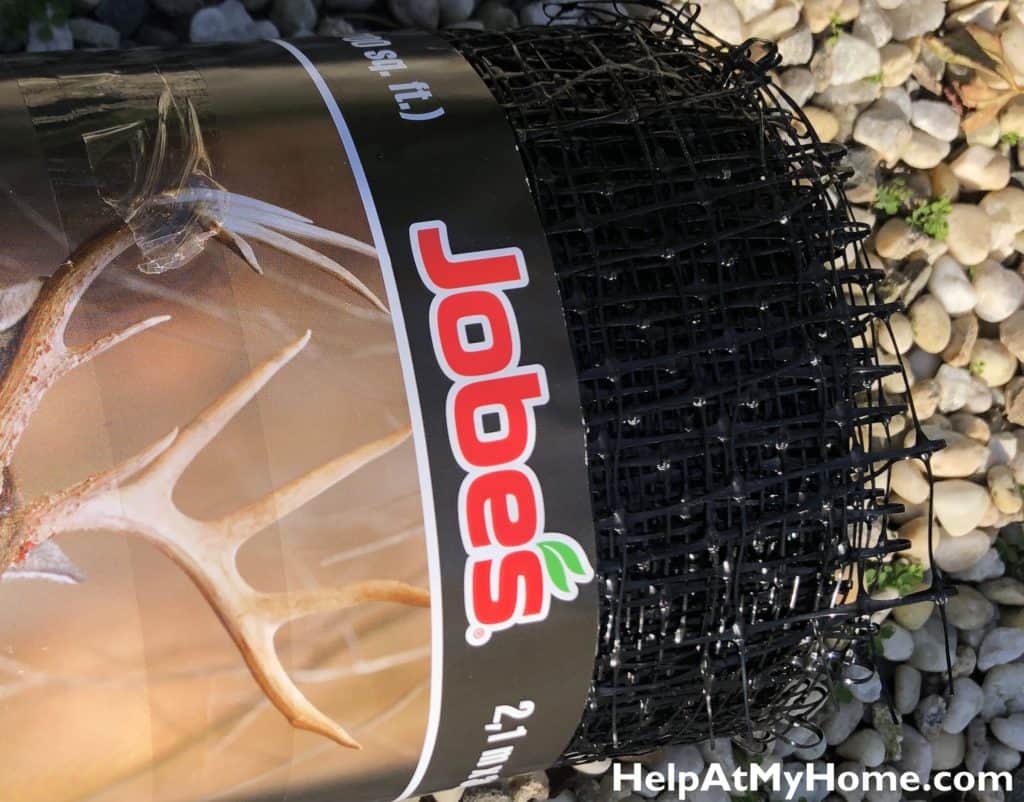
The Best Deer Fencing
There are all kinds of deer fences sold. After much research and experimenting, here are our picks…
Heavy Duty, Multi-Year Deer Fencing
If you are OK with a heavier fencing that is less hidden when installed then a great pick is the Tenax Deer Fence Select. This is tough stuff that will last through multiple years of wear-and-tear.
Basic features of the Tenax Select are…
- Over 600 pound breaking load strength
- Designed to be minimally visible
- Designed to last over 10 years
- Made in the USA
- Mesh Size: 1.77 inches x 1.97 inches
This mesh fencing is strong and easy to install. It has a solid feel and reinforced joints so it very tear-resistant. It’s a little sharp after being cut, but that’s a minor issue.
This Tenax fence is going to last multiple years and won’t break if your dog runs into it, but like anything else made of a plastic or nylon it’ll tear if you hit it with the lawn mower. I’ve found that the strong the fencing the tighter you can make it without tearing, so this looks quite neat when it’s installed and standing.
Tenax also sells a product called the Premium Deer Fence, which is even heavier duty. This moves the tensile strength up to 700 pounds, which means it’s the strongest option you can get before moving to wire fencing. This costs about 1/3 more than the Select fencing. In my opinion the Premium is overkill for protecting your garden and the Select product is ideal.
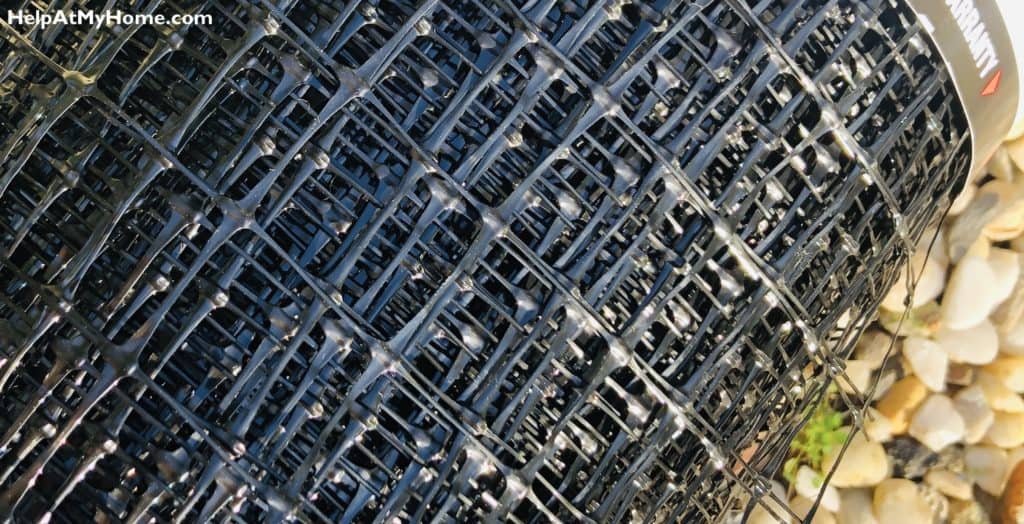
Light Duty Deer Fence
If you want a lightweight deer fence that is easy to install and is minimally visible from the street, then you should get Jobe’s Easy Gardener Deer Barrier Fencing. This stuff is pretty lightweight, but it’s easy to work with and it hides behind a hedge really nicely. I use it behind a 1-foot thick privet hedge and you can barely see it.
This fencing is a good deal lighter than the Tenax, but it’s still functional. The lighter weight means it’s harder to see, especially if it’s near a hedge. This stuff is so light in fact that it ships folded in half — there is no way that could happen with Tenax!
The Jobe’s fencing is bit floppy since it’s so light and it’s a little too tall for an 8-foot post, so some reinforcing wire at the top might be warranted, especially if you want a cleaner look.
With this fencing it’s important not to pull it too tight since it will rip if it’s taut and then pressure it applied to it (for example a child bouncing into it). This won’t happen with the higher strength Tenax, which is much stronger and offered some stretch before it tears.
Jobe’s doesn’t say it’s tensile strength, but it seems to be about half that of the Tenax, so about 300 pounds. One advantage of the Jobe’s is it’s small 5/8″ square grid openings. This means it’ll keep out rabbits and other small animals.
An alternative option in the lightweight fencing segment is the Tenax Economy Deer Fence, which is similar to the Jobe’s but has a 400 pound tensile strength.
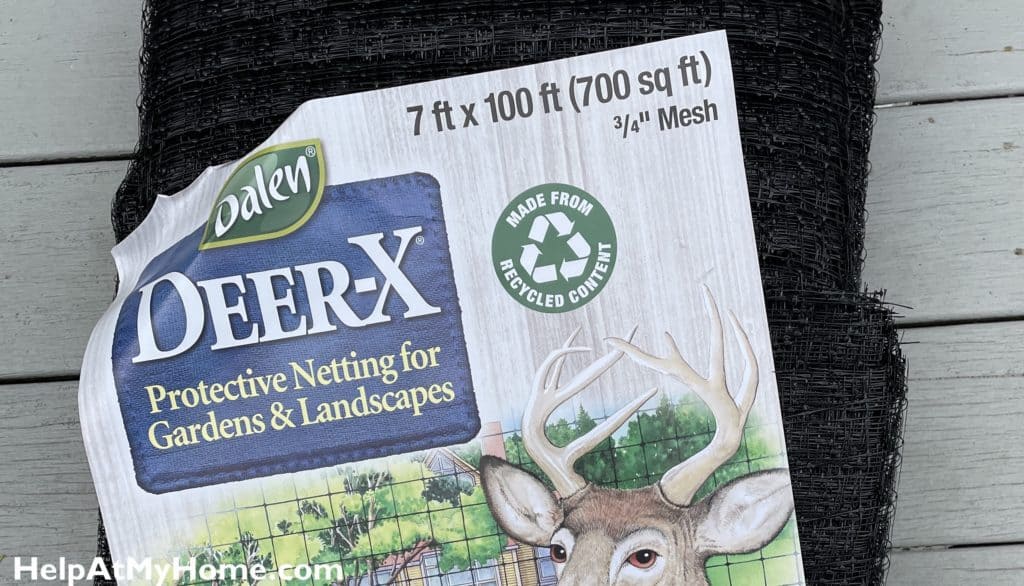
Lightweight Deer Netting
Another alternative to the Jobe’s Easy Gardener is Dalen Deer-X. This is very affordable but it’s too light for full-length fencing! This product is good for fencing around single shrubs, or for protecting protecting a corner garden next your home with a light, 4-foot fence.
Netting is lightweight and can act as a barrier, but it’s not the same as fencing, so buy accordingly. Generally you’d want fencing around a property or garden where netting is used to protect single plants or areas that are otherwise shielded and need a bit more protection.
Deer Fence Sizing
Not sure how much fencing to get or what height? The length is easy: measure the distance around your garden and then add 10% for buffer and mistakes.
The height you need will depend on the posts you get and if you are going all the way to the ground or not.
If you get 8-foot posts then you can get away with a 7-foot deer fencing. You’ll need to fold over the fence a bit when you install it because the post will go more than a foot in the ground. This is OK because you can do the fold at the top and it will reinforce the fencing and you won’t need to add the wire to the top of the fence to prevent sagging or movement in heavy winds.
Deer Fence FAQs
What’s the difference between a T-post and a U-post?
T-posts are metal posts that are shaped like a “T” while U-posts are shaped like a “U” if you look at them from above. T-posts are very reusable, have limited flex, and they are rather expensive. U-posts are affordable, lighter, more flexible, and are sold almost everywhere. T-posts use strong studs where U-posts use flimsy hooks that often bend or break off. This might sound like T-posts are better, but the studs require special tools like a T-post wire clip and a wire clip tool, where a U-post doesn’t need any special tools.
What’s the difference between deer netting and deer fencing?
Deer netting is a light weight grid material that can be thrown over bushes or molded around what it’s protecting where deer fencing is heavier duty and meant to be used vertically along with fence posts. Deer netting is good for protecting single plants, like a hydrangea at the edge of your garden, where fencing protect larger areas.

